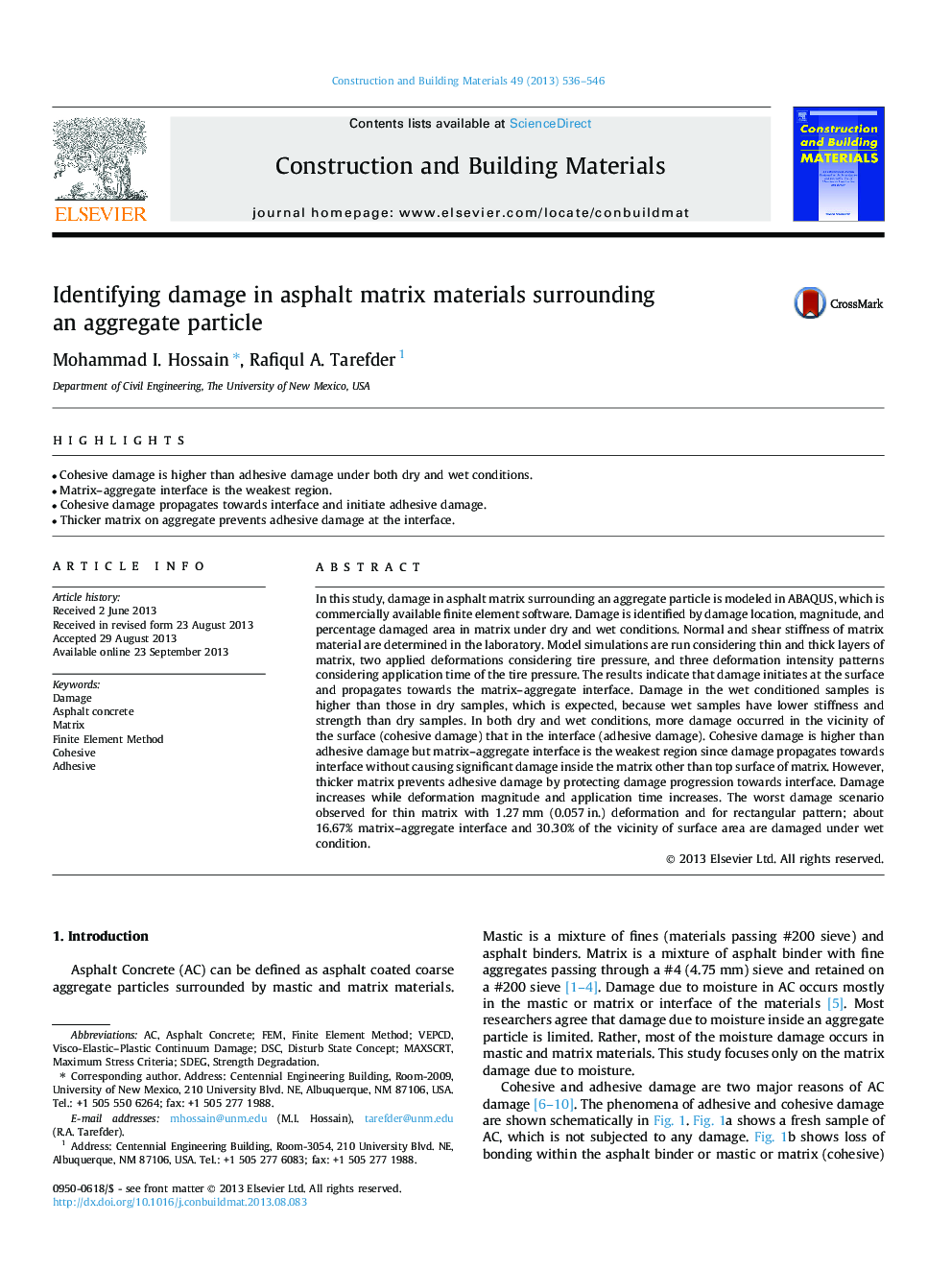| Article ID | Journal | Published Year | Pages | File Type |
|---|---|---|---|---|
| 6724913 | Construction and Building Materials | 2013 | 11 Pages |
Abstract
In this study, damage in asphalt matrix surrounding an aggregate particle is modeled in ABAQUS, which is commercially available finite element software. Damage is identified by damage location, magnitude, and percentage damaged area in matrix under dry and wet conditions. Normal and shear stiffness of matrix material are determined in the laboratory. Model simulations are run considering thin and thick layers of matrix, two applied deformations considering tire pressure, and three deformation intensity patterns considering application time of the tire pressure. The results indicate that damage initiates at the surface and propagates towards the matrix-aggregate interface. Damage in the wet conditioned samples is higher than those in dry samples, which is expected, because wet samples have lower stiffness and strength than dry samples. In both dry and wet conditions, more damage occurred in the vicinity of the surface (cohesive damage) that in the interface (adhesive damage). Cohesive damage is higher than adhesive damage but matrix-aggregate interface is the weakest region since damage propagates towards interface without causing significant damage inside the matrix other than top surface of matrix. However, thicker matrix prevents adhesive damage by protecting damage progression towards interface. Damage increases while deformation magnitude and application time increases. The worst damage scenario observed for thin matrix with 1.27Â mm (0.057Â in.) deformation and for rectangular pattern; about 16.67% matrix-aggregate interface and 30.30% of the vicinity of surface area are damaged under wet condition.
Keywords
Related Topics
Physical Sciences and Engineering
Engineering
Civil and Structural Engineering
Authors
Mohammad I. Hossain, Rafiqul A. Tarefder,
